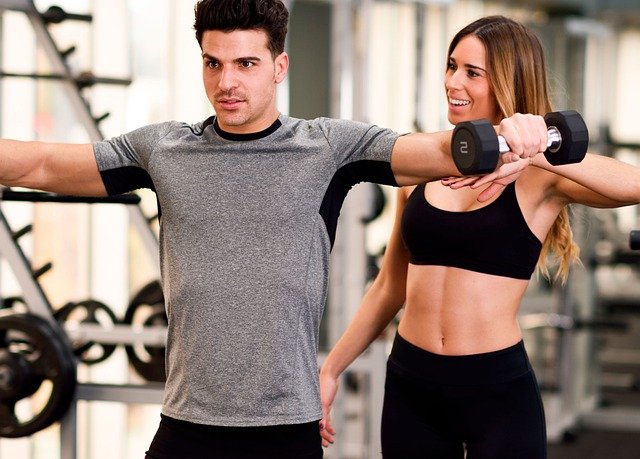How resistance training supports skin structure and tone
Resistance training is commonly associated with muscle, strength, and posture, but it also plays a measurable role in skin structure and tone. By improving circulation, stimulating collagen-related processes, and supporting recovery systems, regular resistance work can complement skincare routines and lifestyle habits to help the skin appear firmer and more resilient.

Resistance training does more than change muscle size and strength; it creates systemic effects that touch skin health as well. Repeated loading, improved movement patterns, and the metabolic shifts from regular strength work influence circulation, hydration, posture, and the molecular environment that supports collagen and extracellular matrix maintenance. This article explains mechanisms linking resistance training to skin structure and tone, and offers practical ways to integrate training with nutrition, sleep, and recovery to support visible skin outcomes.
How does strength training affect skin structure and tone?
Resistance training increases mechanical load on muscles and connective tissues, promoting structural adaptations beneath the skin. As muscles grow and posture improves, the skin’s underlying support can shift, reducing the appearance of laxity in some areas. Strength training also drives local and systemic signaling—growth factors, cytokines, and improved blood flow—that influence fibroblast activity and extracellular matrix turnover. Combined with good nutrition and hydration, consistent training helps maintain tissue integrity and can contribute to a firmer appearance over months rather than days.
How does resistance training improve circulation and recovery?
Strength sessions increase heart rate and local vascular demand, prompting angiogenesis (formation of small blood vessels) and improved microcirculation over time. Better circulation delivers oxygen, nutrients, and immune cells needed for tissue repair and recovery—processes important for skin maintenance and wound healing. Post-exercise recovery practices such as gentle mobility work, adequate sleep, and targeted hydration support these circulatory benefits, helping the skin clear metabolic byproducts and maintain a healthy tone.
Can resistance work support collagen production and hydration?
Mechanical loading from resistance exercises stimulates molecular pathways associated with connective tissue remodeling. While exercise alone is not a direct substitute for biochemical interventions, it can upregulate factors that favor collagen synthesis and turnover. Hydration at the cellular level is influenced by overall fluid balance, sodium–potassium regulation, and glycosaminoglycan content—elements supported indirectly by regular training, adequate dietary protein, and consistent water intake. The combined effect is an environment more conducive to maintaining collagen quality and skin hydration.
How do mobility, posture, and breathwork tie into skin appearance?
Improved mobility and posture change how soft tissues sit under the skin, which can alter its visible tone. Resistance training that includes mobility drills and posture-focused exercises reduces chronic tension patterns and asymmetries, helping skin and fascia align more evenly. Breathwork and diaphragmatic breathing support core stability and venous return, contributing to circulation and reducing neck and shoulder tension that may affect facial and upper-body skin appearance. These complementary practices promote balance between strength and tissue length.
How should nutrition, sleep, and recovery be combined with strength training?
Protein intake, micronutrients (vitamin C, zinc), healthy fats, and consistent calories support tissue repair and collagen synthesis after resistance work. Sleep is critical: deep sleep phases are when growth hormone and repair processes are most active, making nightly recovery important for both muscle and skin health. Active recovery, guided mobility, and periodic deloading prevent chronic inflammation that can impair tissue quality. Thoughtful integration of nutrition, hydration, sleep, and stress management amplifies the benefits of training for skin outcomes.
How do endurance, mobility, and targeted strength programs differ for skin benefits?
Endurance activities improve systemic circulation and metabolic health, which supports skin by enhancing nutrient delivery, while mobility work maintains fascial glide and tissue elasticity. Targeted resistance programs that include progressive overload, balanced movement patterns, and attention to postural muscles tend to produce the structural changes most relevant to skin support. Combining moderate endurance work, focused mobility sessions, and resistance training tailored to individual needs creates a holistic approach that addresses circulation, muscle tone, and connective tissue quality.
This article is for informational purposes only and should not be considered medical advice. Please consult a qualified healthcare professional for personalized guidance and treatment.
In summary, resistance training contributes to skin structure and tone through mechanical loading, improved circulation, and support for recovery pathways that influence collagen and extracellular matrix maintenance. When combined with adequate nutrition, hydration, sleep, and mobility work, strength-focused programs can complement skincare routines and broader health practices to support skin resilience over time.





